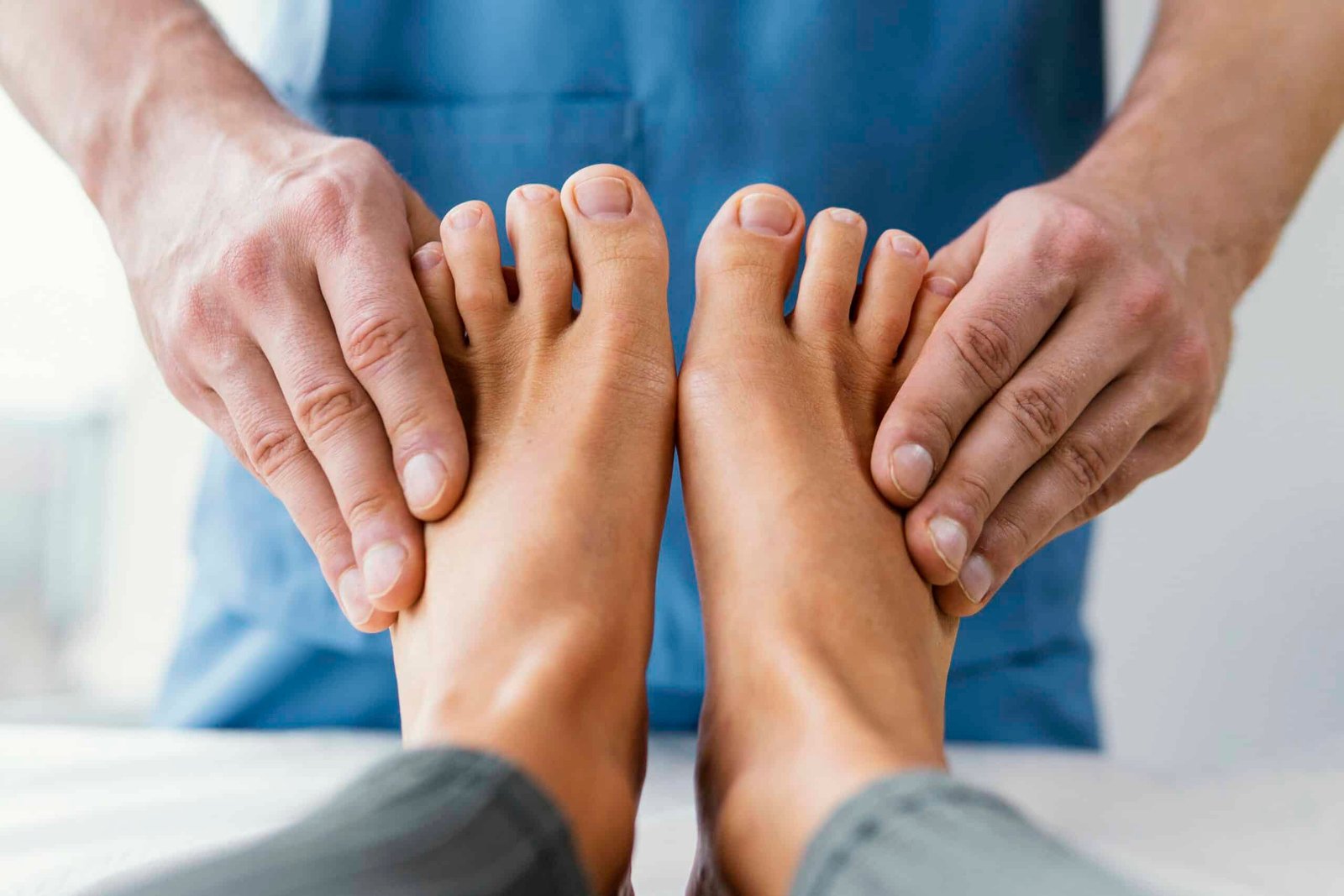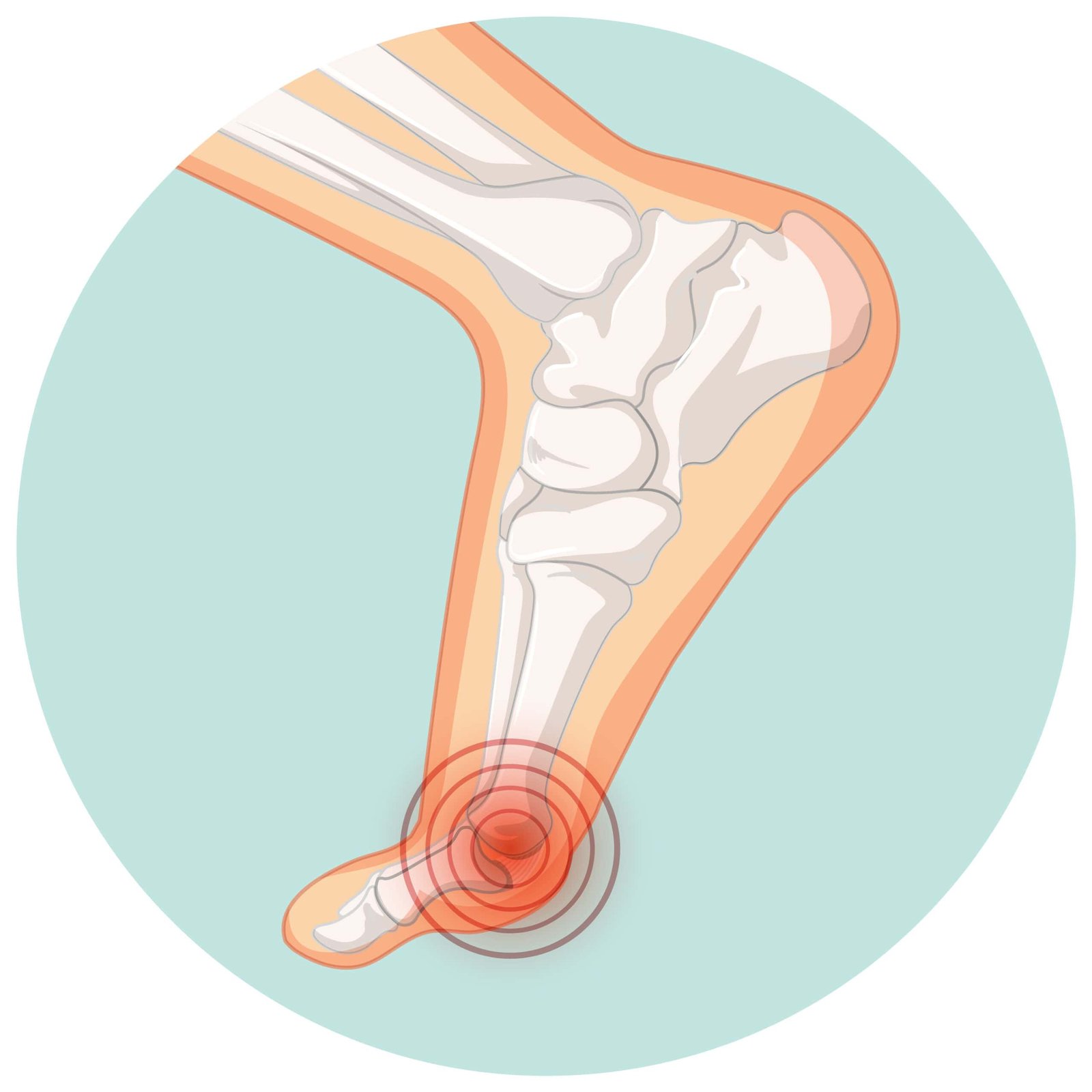Podiatry
Podiatry is a medical specialty focused on diagnosing and treating conditions related to the feet, ankles, and lower extremities. Podiatrists provide comprehensive foot care, ranging from routine check-ups to advanced surgical interventions.
Routine Podiatry/Foot Assessment for Patients with Diabetes
Without healthy feet, mobility is threatened, and exercise restricted which gradually impacts on cardiovascular function.
We offer treatment & advice for common conditions like: painful/ neurovascular corns, calluses, athletes' feet, blisters, chilblains, nail pathologies including fungal nails, ingrown toenails, mild wounds & ulcerations.
Diabetes is the leading cause of non-traumatic amputation. It sometimes causes severe foot deformities that offsets patients biomechanics and increase the risk of ulceration, sepsis and/or amputation. We carry out a full neurovascular assessment to check the nerve and blood vessels in the feet, treat, advice and refer where necessary.
Biomechanical Assessment and Gait Analysis
During this appointment, the podiatrist will examine your feet, knee and lower back, and carry out a gait analysis.
A gait analysis looks at the way you walk and measures where your feet lands with each step. This will be done by watching you walk on our in-clinic treadmill with a gait camera stationed behind you to capture every moment during your gait cycle.
Following this, the podiatrist would come up with a diagnosis and management plan.
Common conditions: Morton's neuroma, tendinopathy, plantar fasciitis, ankle sprain, joint pain.
Toenail Surgery
An ingrowing toenail develops when the sides of the toenail grow into the surrounding skin.
The skin becomes red, swollen, and tender. Ingrowing toenails most commonly affect the big toenail but can affect the other toes too. The medical term for an ingrowing toenail is onychocryptosis.
The most common causes include poorly cut toenails, ill-fitting shoes, trauma, nail infections, and certain inherited shapes of the nail plate.
There are several non-surgical treatments for mild ingrowing toenails. However, in more severe cases surgery is often required to offer an effective and permanent solution.
Podopaediatrics (children's foot & lower limb assessment)
Podopaediatrics is an area of podiatric medicine that focuses on the diagnosis and management of foot disorders in children.
Biomechanical abnormalities in a child can cause long-term damage to the foot. This is because the feet of young children are soft and pliable, so abnormal pressures can easily cause the foot to deform.
By correcting early foot deformities many long-term chronic mobility issues can be safely and effectively addressed.
Your full medical history, any previous reports in the case of injuries, and medication if you are using any.
The actual time spent on a Podiatry treatment depends on the kind of treatment and injury. Expect to spend at least 30 minutes for a single session.
Podiatrists are already qualified enough to determine your treatment without a doctor’s referral. However, in the case of insurance, you may need one for claims. Appointments are mandatory if you don’t want to spend your time waiting for a chance turn. You can easily get a time that suits you via phone or online booking.



